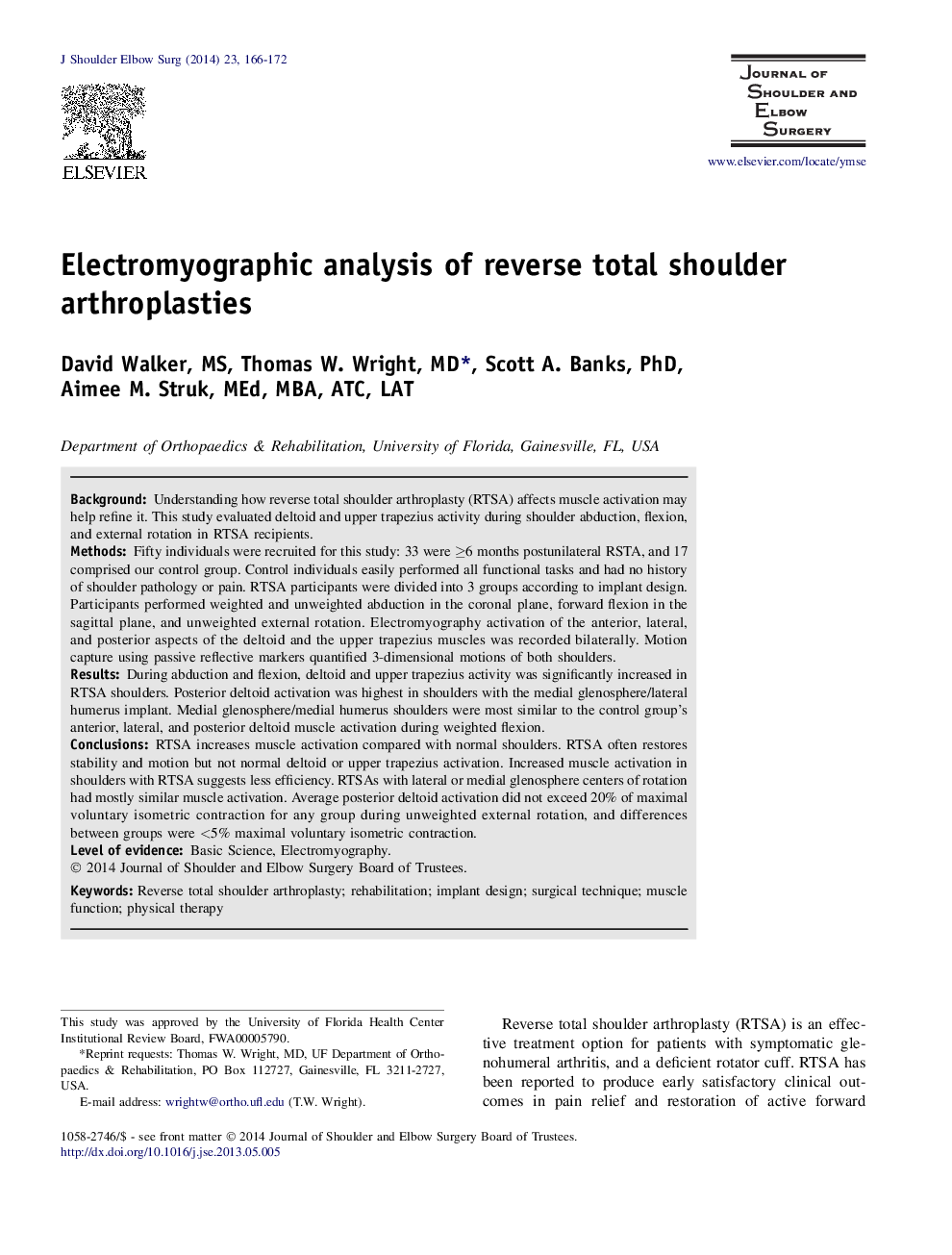| کد مقاله | کد نشریه | سال انتشار | مقاله انگلیسی | نسخه تمام متن |
|---|---|---|---|---|
| 4073887 | 1266993 | 2014 | 7 صفحه PDF | دانلود رایگان |
BackgroundUnderstanding how reverse total shoulder arthroplasty (RTSA) affects muscle activation may help refine it. This study evaluated deltoid and upper trapezius activity during shoulder abduction, flexion, and external rotation in RTSA recipients.MethodsFifty individuals were recruited for this study: 33 were ≥6 months postunilateral RSTA, and 17 comprised our control group. Control individuals easily performed all functional tasks and had no history of shoulder pathology or pain. RTSA participants were divided into 3 groups according to implant design. Participants performed weighted and unweighted abduction in the coronal plane, forward flexion in the sagittal plane, and unweighted external rotation. Electromyography activation of the anterior, lateral, and posterior aspects of the deltoid and the upper trapezius muscles was recorded bilaterally. Motion capture using passive reflective markers quantified 3-dimensional motions of both shoulders.ResultsDuring abduction and flexion, deltoid and upper trapezius activity was significantly increased in RTSA shoulders. Posterior deltoid activation was highest in shoulders with the medial glenosphere/lateral humerus implant. Medial glenosphere/medial humerus shoulders were most similar to the control group's anterior, lateral, and posterior deltoid muscle activation during weighted flexion.ConclusionsRTSA increases muscle activation compared with normal shoulders. RTSA often restores stability and motion but not normal deltoid or upper trapezius activation. Increased muscle activation in shoulders with RTSA suggests less efficiency. RTSAs with lateral or medial glenosphere centers of rotation had mostly similar muscle activation. Average posterior deltoid activation did not exceed 20% of maximal voluntary isometric contraction for any group during unweighted external rotation, and differences between groups were <5% maximal voluntary isometric contraction.
Journal: Journal of Shoulder and Elbow Surgery - Volume 23, Issue 2, February 2014, Pages 166–172
